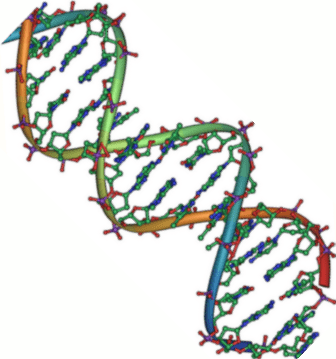
Yes, I’m enough of a troglodyte to have read Jonathan Wells, The Politically Incorrect Guide to Darwinism and Intelligent Design (Washington DC: Regnery, 2006). Jonathan Wells is a Senior Fellow at the Discovery Institute in Washington. He earned a Ph.D. in religious studies at Yale University with a focus on historical reactions to Darwinism, and then proceeded to earn a second Ph.D. in molecular and cell biology from the University of California at Berkeley. Here is a passage from the book:
Darwin did not know the origin of new variations, but modern Darwinists believe that DNA mutations supply them. In 1970, French molecular biologist Jacques Monod said that with the discovery of DNA’s structure and function, “and the understanding of the random physical basis of mutation that molecular biology has also provided, the mechanism of Darwinism is at last securely founded.” Monod concluded, “Man has to understand that he is a mere accident.”
So living things may look as though they were designed, but if Darwinism is true then this is only an illusion. Oxford Darwinist Richard Dawkins even defines biology as “the study of complicated things that give the appearance of having been designed.” Design is only an appearance, he believes, because “the evidence of evolution reveals a universe without design.” (5)
***
A good case of “the appearance of having been designed” shows up in Peter S. Ungar, “The Trouble with Teeth,” Scientific American (April 2020), on page 46:
Evolutionary biologists often marvel at the human eye as a “miracle of design.” To me, eyes have nothing on teeth. Our teeth break foods without themselves being broken — up to millions of times over the course of a lifetime — and they do this despite being built from the very same raw materials as the foods they break. Engineers have much to learn from teeth. Their remarkable strength comes from an ingenious structure that gives them the hardness and the toughness to resist the start and spread of cracks. Both properties result from the combination of two components: a hard external cap of enamel made almost entirely of calcium phosphate and an internal layer of dentin, which also has organic fibers that make the tissue flexible.
The real magic happens on the microscopic scale, though. Think of a single strand of dried spaghetti breaking easily when bent. Now imagine thousands of strands bunched together. Enamel structures known as crystallites are like those strands, each one 1000th the width of a human hair. They bundle together to form rods of enamel called prisms. In turn, prisms are packed together, with tens of thousands per square millimeter, to form the enamel cap. They run parallel to one another from the surface of the tooth to the underlying dentin, wriggling, weaving and twisting as they go — an elegant configuration that confers impressive durability.
But Dr. Ungar, a paleontologist and dental anthropologist at the University of Arkansas, doesn’t appear to be using the term design as anything more than a metaphor:
This design did not emerge overnight. Nature has been tinkering with teeth for hundreds of millions of years.
And he proceeds, starting with the first vertebrates — jawless fishes — to give an account of the evolution of teeth.
***
Finally, I appreciated this:
“COVID-19: Rejecting the false choice of science or spirit, faith or reason”
Some critics here on my blog and elsewhere have accused Church leaders of being faithless because they’ve followed medical and scientific guidelines to slow or minimize the spread of the coronavirus. And at least one rather bizarre critic has declared that anti-scientific attitudes such as mine [!] have permitted COVID-19 to become the threat that it has and that my fear and hatred of science, if they were to become more general among the population, would prevent an effective defense against the disease. To which, of course, I respond with my lifelong motto: Viva la ignorancia!












